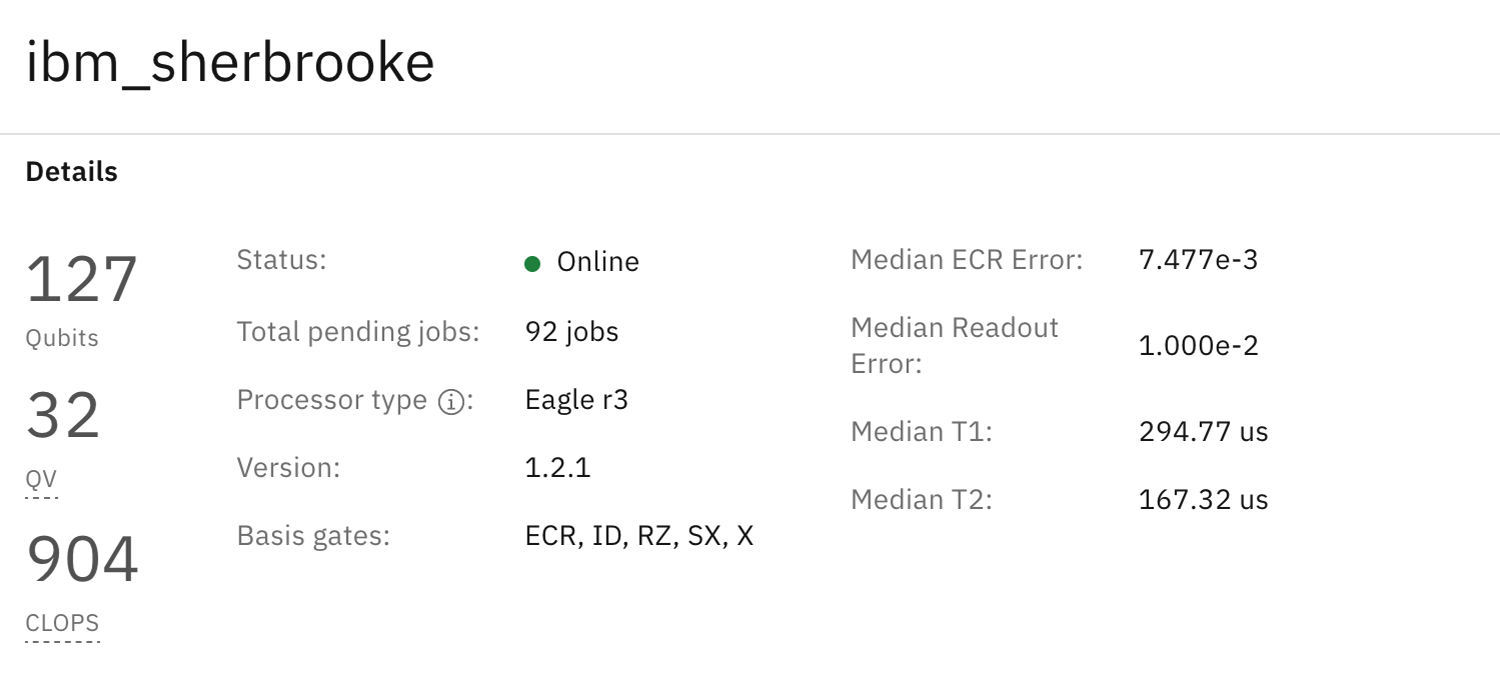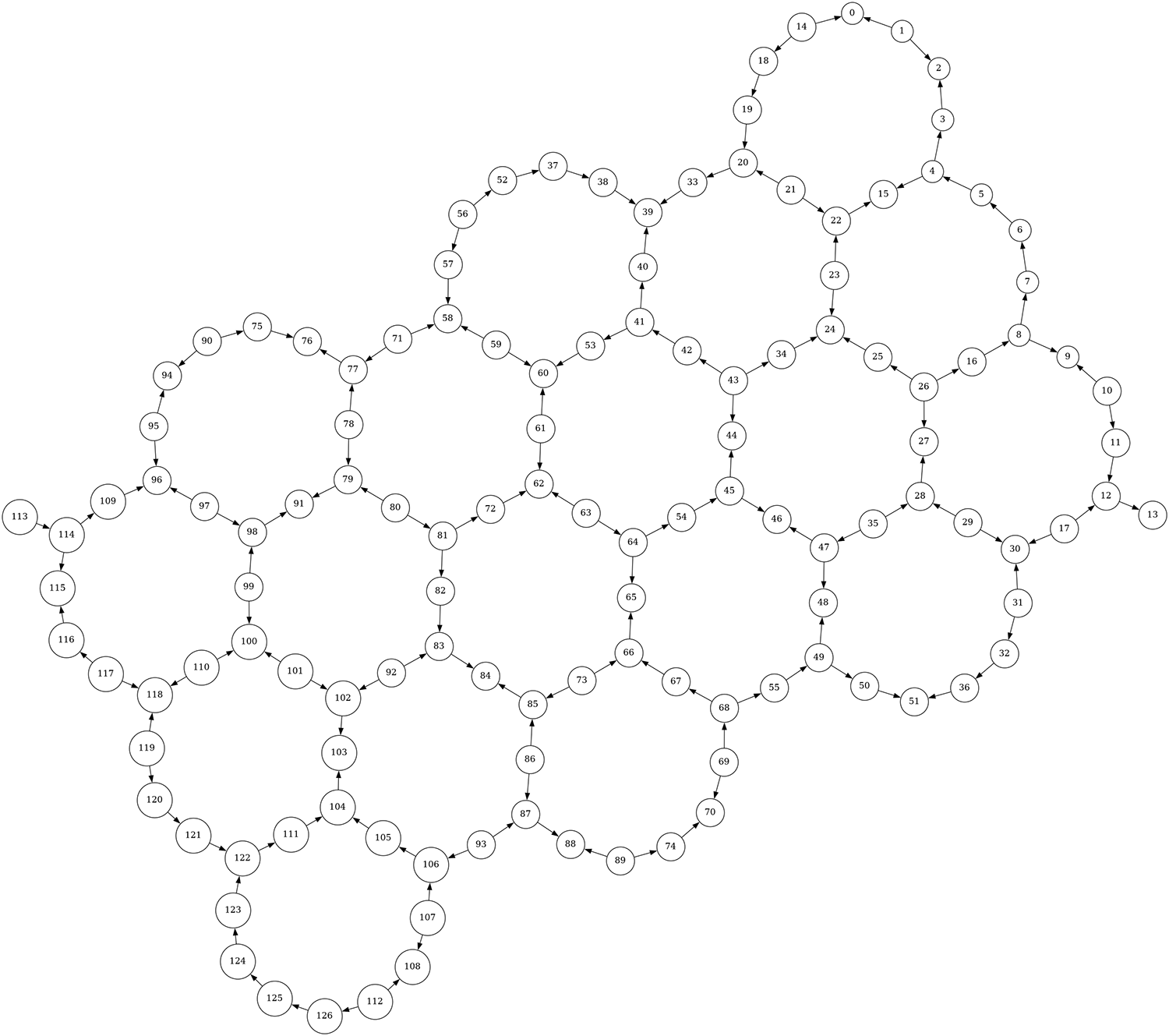The path to quantum advantage requires constant improvement along the axes of scale, quality, and speed. To this end, we are pleased to announce that we’re adding to our Qiskit Runtime-as-a-Service
Access is provided through the IBM Quantum Premium Plan
Classical simulation does a great job solving problems that utilize up to 40-50 qubits today. Beyond that, however, evidence shows that quantum computation will take the lead when supported by error mitigation, suppression, and correction techniques. The release of the ibm_sherbrooke
IBM Quantum systems are named after cities around the world. IBM Quantum processors are named after birds. Check out all available IBM Quantum systems and simulators, here.
With fault tolerance the ultimate goal, error mitigation is the path that gets quantum computing to usefulness. Read more.
Error mitigation techniques are important for tackling long circuits, such as those that approach or exceed the largest quantum volume circuits successfully run on today's quantum hardware. They perform best on systems in which errors remain stable over time with little need for recalibration. This motivates a departure from historically used calibration strategies that sought to minimize error rates even at the expense of stability. In particular, this means not necessarily optimizing for the best achievable quantum volume.
Therefore, we are introducing the ibm_sherbrooke system into our Qiskit Runtime-as-a-Service with a new calibration strategy that delivers greatly reduced measurement leakage, improved gate stability, and uniform gate speed — together marking an inflection point in driving reliable performance for hardware-efficient circuits.

Metrics of the ibm_sherbrooke system with 127-qubit IBM Eagle R3.
Echoed cross resonance gates
This new processor incorporates some key changes. For example, in order to minimize drift in error rates and the need for frequent recalibrations that may invalidate error models, we are using echoed cross-resonance (ECR) gates, rather than direct CNOT gates, to generate entanglement across all edges of the chip. To minimize leakage and coherent errors while maximizing stability, and thus extending validity of error models, the gate and measurement lengths have been increased relative to previous systems.
And finally, to ensure that Qiskit’s transpiler will select the most-efficient mapping of circuits onto the system’s native gates, we are now directly exposing these gates to Qiskit as ECR basis gates rather than transforming them into controlled-x basis gates, and we are presenting them only in their native direction, rather than bidirectionally. We have included an image of this unidirectional mapping for reference:

The most-efficient unidirectional mapping of circuits onto ibm_sherbrooke’s native gates.
ibm_sherbrooke is the latest quantum system with a 127-qubit Eagle R3 processor. As we showed at this year’s IBM Quantum Summit, this third revision of the Eagle processor uses a new architecture providing higher qubit coherence. The increased coherence has allowed us to achieve lower gate errors than before, despite the longer gate lengths. Specifically, the median CNOT error rate of ~0.66% is ~0.6 percentage points better than an Eagle R1 using the previous calibration strategy.
At present, this system has achieved a CLOPS
Driving quantum performance: more qubits, higher Quantum Volume, and now a proper measure of speed — Circuit Layer Operations Per Second (CLOPS).
This announcement underpins our efforts towards useful quantum computing and supports this year’s Summit announcements, including dynamic circuits, new error mitigation capabilities and how they were used to execute longer and better circuits than ever before — leading to our 100×100 challenge
In 2024, we plan to offer a tool capable of calculating unbiased observables of circuits with 100 qubits and depth-100 gate operations in a reasonable runtime. Read more.
We are excited to continue offering these systems to our Qiskit Runtime-as-a-Service, and hope they’ll serve as valuable tools as we work to bring useful quantum computing to the world.




